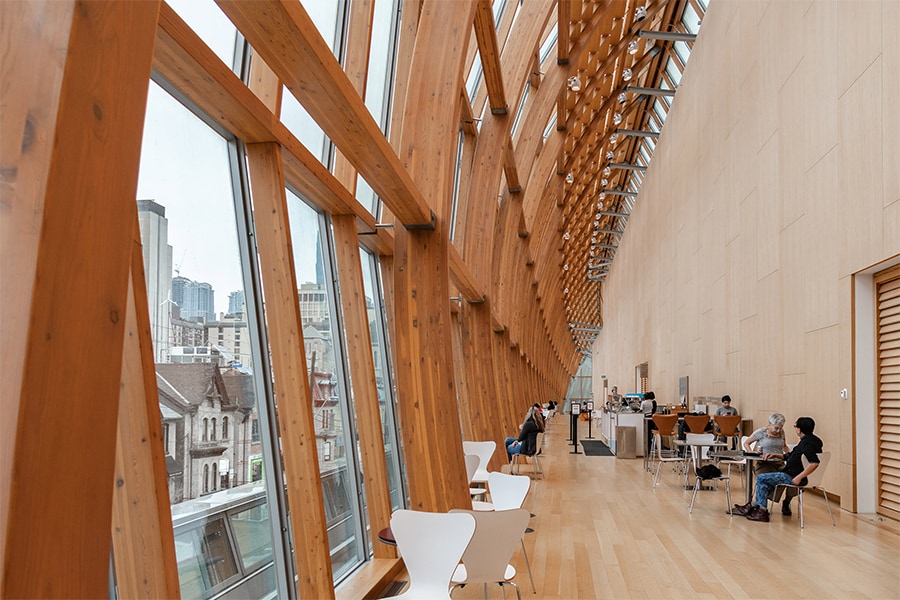
Wooden architecture: An ecological alternative on the rise
Wood appears to offer a viable ecological alternative for the building industry. More environmentally friendly, wood can replace concrete and steel—the most-used materials in the construction industry, but big emitters of carbon dioxide
 A 25-story apartment tower called Ascent is expected to be completed this summer in Milwaukee, setting a new record for the world's tallest wooden tower. A 25-story apartment tower called Ascent is expected to be completed this summer in Milwaukee, setting a new record for the world's tallest wooden tower. Image: Donna Lay / Unsplash©
A 25-story apartment tower called Ascent is expected to be completed this summer in Milwaukee, setting a new record for the world's tallest wooden tower. A 25-story apartment tower called Ascent is expected to be completed this summer in Milwaukee, setting a new record for the world's tallest wooden tower. Image: Donna Lay / Unsplash©
Wooden skyscrapers are starting to appear all over the world. Wood is a more environmentally friendly alternative to traditional concrete structures. And new construction methods are allowing such buildings to become taller and taller.
On the shores of Lake Mjøsa in Norway stands the world's tallest wooden building. At 85.4 meters, the Mjøstårnet tower represents the future of building design. Engineered wood, or solid wood products, form its main structure. Now, more and more wooden skyscrapers—like this building, completed in 2019—are springing up around the world.
In Sweden, Austria, Switzerland, England, but also in the United States and Australia, wooden buildings are on the rise. There are several reasons for this trend. This material appears to offer a viable ecological alternative for the building industry. More environmentally friendly, wood can replace concrete and steel—the most-used materials in the construction industry, but big emitters of carbon dioxide. The manufacture of cement and concrete is responsible for about 8% of global greenhouse gas emissions. According to the latest IPCC report, wood as a building material can be up to 30 times less CO2 intensive than concrete, and hundreds, even thousands, of times less than steel.
In addition, building with wood can reduce construction costs and even construction time. The Stadthaus in London, a nine-story office and residential building, was built in 49 weeks—five months less than an equivalent concrete and steel building. It also saved over 300 tons of CO2 compared to a conventional building.
What is solid wood?
Solid wood comes from the mass of a tree. In theory, the material does not undergo any processing or transformation. But behind this term lies a multitude of forms, including cross-laminated timber (CLT), which has opened up the field of possibilities in building construction. CLT is engineered wood made of flat boards glued together in perpendicular layers. By stacking the boards in this way, large solid-wood panels can be created to serve as floors, ceilings, walls, and even entire buildings.







